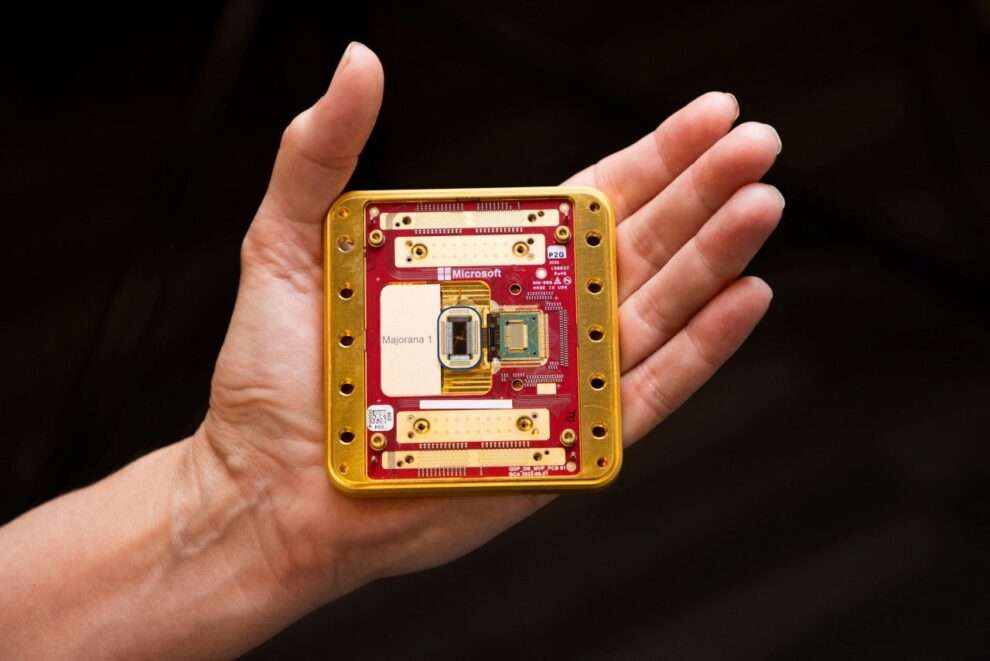Microsoft has revealed a significant breakthrough in quantum computing. The tech giant’s researchers claim to have created a new state of matter, paving the way for quantum computers far more powerful than anything currently in existence. This development, detailed in a paper published in the prestigious scientific journal Nature, marks a pivotal moment in the race to build practical quantum systems.
The heart of this breakthrough lies in a chip dubbed “Majorana 1,” which leverages a topological superconductor—a material that defies conventional classification as a solid, liquid, or gas. This exotic state of matter enables the chip to produce building blocks that could be scaled up to create quantum computers capable of solving problems that are currently beyond the reach of even the most advanced supercomputers.
The Science Behind the Breakthrough
Quantum computing operates on principles fundamentally different from classical computing. While traditional computers rely on bits that exist as either 0s or 1s, quantum computers use quantum bits, or qubits, which can exist in multiple states simultaneously thanks to the phenomenon of superposition. This allows quantum computers to process vast amounts of data at unprecedented speeds.
However, qubits are notoriously fragile, easily disrupted by external factors like temperature fluctuations or electromagnetic interference. This fragility has been a major hurdle in developing practical quantum systems. Microsoft’s Majorana 1 chip addresses this challenge by utilizing a topological superconductor, a material that inherently protects qubits from such disturbances.
The chip’s design is based on the concept of Majorana fermions, hypothetical particles that act as their own antiparticles. These particles, first theorized by physicist Ettore Majorana in 1937, have long been sought after by scientists for their potential to create stable qubits. Microsoft’s researchers claim to have successfully engineered these particles within the Majorana 1 chip, a feat that could revolutionize the field of quantum computing.
The Implications of a Quantum Future
While the Majorana 1 chip is still in the research phase and not yet available for commercial use, its implications are profound. Quantum computers built on this technology could tackle complex problems in fields ranging from cryptography to drug discovery, materials science, and artificial intelligence. For instance, they could simulate molecular interactions with unparalleled precision, accelerating the development of new medicines or enabling the creation of advanced materials with tailored properties.
Microsoft’s breakthrough also underscores the intense competition among tech giants to dominate the quantum computing landscape. Companies like IBM, Google, and Intel have all made significant strides in recent years, but Microsoft’s latest achievement could give it a crucial edge. The company has been investing heavily in quantum research, and the Majorana 1 chip represents a major milestone in its efforts to build a scalable, fault-tolerant quantum computer.
Challenges and the Road Ahead
Despite the excitement surrounding this development, significant challenges remain. Quantum computing is still in its infancy, and translating theoretical breakthroughs into practical applications is no small feat. The Majorana 1 chip, while promising, is just one piece of a much larger puzzle. Building a fully functional quantum computer will require overcoming numerous technical hurdles, including improving qubit stability, reducing error rates, and developing new algorithms tailored to quantum systems.
Moreover, the broader adoption of quantum computing will depend on addressing ethical and security concerns. Quantum computers have the potential to break current encryption methods, raising questions about data privacy and cybersecurity. As the technology advances, policymakers, researchers, and industry leaders will need to work together to establish frameworks that ensure its responsible use.
A New Era of Computing
Microsoft’s breakthrough is a testament to the power of innovation and collaboration in pushing the boundaries of what’s possible. By creating a new state of matter and harnessing the unique properties of Majorana fermions, the company has taken a significant step toward realizing the dream of practical quantum computing.
While the road ahead is long and fraught with challenges, the potential rewards are immense. Quantum computing could usher in a new era of technological progress, transforming industries and solving problems that were once thought to be insurmountable. As Microsoft and its peers continue to push the envelope, the world watches with bated breath, eager to see how this quantum revolution will unfold.
In the words of Asa Fitch and Tom Dotan, who reported on this development, the Majorana 1 chip is not just a scientific achievement—it’s a glimpse into a future where the impossible becomes possible. And as Microsoft leads the charge, that future may be closer than we think.
















Add Comment